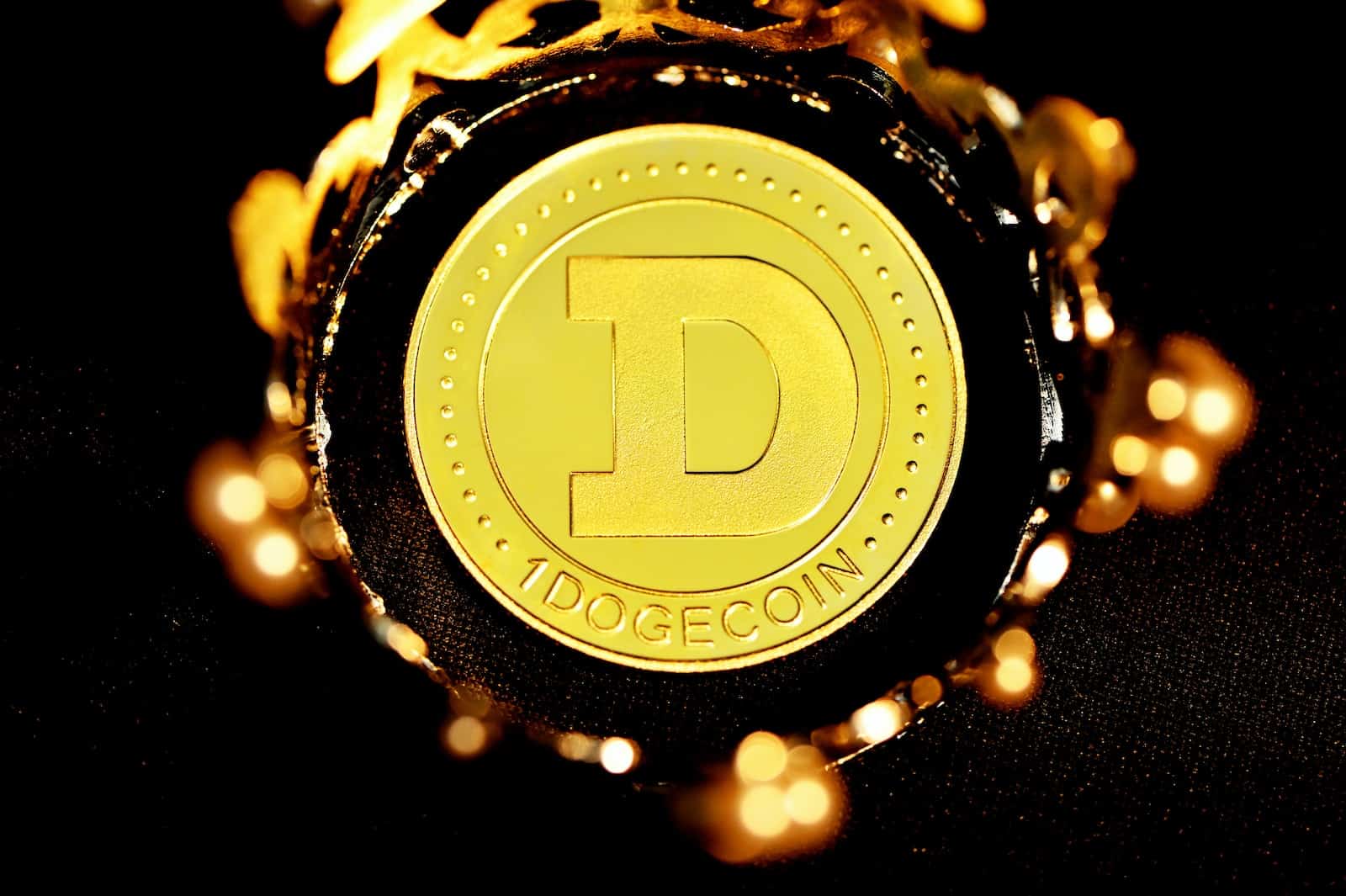Dogecoin and Ripple are two of the most controversial entries into the cryptocurrency market. Both are well known not only to investors and speculators but also to the general public. The question of which to purchase, Dogecoin vs Ripple, has perplexed many investors in cryptocurrencies. Each currency has strengths and weaknesses, and each might prove attractive. Each has its share of detractors and supporters.
While the debate is unlikely to be resolved anytime soon, a close study of both Dogecoin and Ripple will help you decide whether you wish to invest in these unusual cryptocurrencies. This comparison guide will discuss the similarities and differences between Ripple (XRP) and Dogecoin (DOGE) to help you understand the distinctions you need to know before investing.
Ripple (XRP)
Ripple is a real-time gross settlement system (RTGS) and currency exchange and remittance network by Ripple. By leveraging a distributed open source Internet protocol, and supporting tokens representing fiat currency, cryptocurrency, commodities, or other units of value such as frequent flier miles or mobile minutes, Ripple enables tokenized funds transfer for settlement and remittance. Ripple purports to enable “seamless” funds transfer between banks and/or individuals across different currencies and countries.
Ripple was founded in 2012 by Chris Larsen and OpenCoin, a company that was rebranded as Ripple Labs in 2015. Ripple is based in San Francisco, California, and has a development office in India. As of 2019, the company has more than 100 employees. Ripple’s core team includes experienced executives and engineers from a variety of industries, including financial services, security, and technology.
In addition to the open-source Ripple protocol, Ripple also offers a suite of products and services that enable financial institutions and individuals to use RippleNet for payments and liquidity management. RippleNet is a network of institutions and liquidity providers that use Ripple’s technology to process payments and trades. Ripple also offers a range of tools and services that enable developers to build applications on top of the RippleNet platform.
Dogecoin (DOGE)
Dogecoin is a cryptocurrency that was created as a parody of the then-popular cryptocurrency, Bitcoin. It was created by Jackson Palmer, a software developer, in 2013. Dogecoin is similar to Bitcoin in that it is a decentralized digital currency that can be transferred between individuals without the need for a central authority. However, Dogecoin has a few key differences that set it apart from Bitcoin.
One of the main differences between Dogecoin and Bitcoin is the way that the currency is mined. Bitcoin uses a proof-of-work system, which requires miners to solve complex mathematical problems to validate transactions and create new blocks. Dogecoin, on the other hand, uses a proof-of-stake system, which requires miners to hold a certain amount of Dogecoin in order to validate transactions. This means that Dogecoin mining is less energy-intensive and more accessible to individuals with lower levels of computing power.
Another key difference between Dogecoin and Bitcoin is the total supply of the currency. Bitcoin has a total supply of 21 million, while Dogecoin has no maximum supply. This means that there is potentially an unlimited amount of Dogecoin that can be created, although the rate at which new coins are created slows down over time.
Dogecoin has gained a large following among cryptocurrency enthusiasts and has become known for its active community and charitable efforts. In 2014, the Dogecoin community raised over $30,000 in Dogecoin to fund the Jamaican bobsled team’s trip to the Winter Olympics in Sochi, Russia. The community has also raised funds for other charitable causes, such as building wells in Africa and helping to support the victims of natural disasters.
Similarities Between Dogecoin and Ripple.
Dogecoin and ripple are both crypto-currencies designed as alternatives to established currencies and banking institutions. Consequently, both dogecoin and ripple share many features in common owing to their shared technological origins. Both Dogecoin and Ripple have somewhat unorthodox origins. Dogecoin began as a practical joke and a commentary on the nature of crypto-currency investing. Dogecoin then took on a life of its own, as investors began to treat it seriously. Ripple began as a product created by a company, Ripple Labs, in order to provide a quick method for banks to settle transactions between financial institutions. Originally a marker designed to prevent the need for currency foreign exchange conversions and costs, the ripple xrp token gained life as a crypto-currency when a secondary market developed.
Transaction Speed
Ripple is designed for speed. Ripple can process up to 1,500 transactions per second, making it much faster than Bitcoin. Dogecoin, on the other hand, is slower, processing only about 30 transactions per second.
Transaction Costs
Ripple transaction costs are minimal, at about 0.00001 XRP. Dogecoin transaction costs are slightly higher, at about 1 DOGE.
Mining
Ripple is not mined like other cryptocurrencies. Instead, it uses a consensus mechanism called the “Ripple Protocol Consensus Algorithm” to validate transactions. Dogecoin, on the other hand, uses Scrypt mining, which is similar to Bitcoin’s mining algorithm.
Supply
The total supply of Ripple is capped at 100 billion XRP, while the total supply of Dogecoin is uncapped, with over 120 billion DOGE in circulation.
Community
Ripple has a strong focus on building partnerships with financial institutions and has established a significant presence in the financial industry. Dogecoin, on the other hand, has a strong community of enthusiasts and is often used as a tip for content creators and in microtransactions.
Purpose
Ripple is designed to be a payment system for financial institutions, while Dogecoin is more of a social experiment and a way to tip content creators.
In conclusion, while both Dogecoin and Ripple are cryptocurrencies, they have distinct differences in terms of their design, purpose, and features. Ripple is designed for speed and scalability, with a focus on partnering with financial institutions, while Dogecoin is more of a community-driven project with a focus on microtransactions and tipping. When deciding whether to invest in either cryptocurrency, it’s important to consider their unique features and potential use cases.
Symbol
The symbol for Ripple is XRP, while the symbol for Dogecoin is DOGE.
Current Price
As of June 27, 2022, the price of Ripple (XRP) is $0.218336, while the price of Dogecoin (DOGE) is $0.002994.
Market Capitalization
The market capitalization of Ripple (XRP) as of June 27, 2022, is $17,348,594,104.59, while the market capitalization of Dogecoin (DOGE) is $9,708,405,808.70.
Creation
Ripple was created by Ripple Labs, a private company, while Dogecoin was created by Jackson Palmer, a software developer, as a parody of the then-popular cryptocurrency, Bitcoin.
Blockchain
Ripple uses a unique blockchain technology called the Ripple Protocol Consensus Algorithm (RPCA), which is different from the traditional blockchain technology used by Bitcoin and other cryptocurrencies. Dogecoin, like Bitcoin, uses a proof-of-work consensus algorithm.
Transaction Time
Ripple transactions settle in 2-5 seconds, while Dogecoin transactions take about 1 minute to settle.
Fees
The fees for Ripple transactions are minimal, at about 0.00001 XRP, while the fees for Dogecoin transactions are slightly higher, at about 1 DOGE.
Maximum Supply
The maximum supply of Ripple is capped at 100 billion XRP, while the maximum supply of Dogecoin is uncapped, with over 120 billion DOGE in circulation.
Average Block Time
The average block time for Ripple is 2-5 seconds, while the average block time for Dogecoin is 1 minute.
Hashing Algorithm
Ripple uses a hashing algorithm called SHA-512, while Dogecoin uses Scrypt.
Block Explorer
Ripple’s block explorer is called Ripple Explorer, while Dogecoin’s block explorer is called Dogecoin Block Explorer.
In conclusion, Ripple (XRP) and Dogecoin (DOGE) are two unique cryptocurrencies with different features, purposes, and uses. Ripple is designed to be a fast and scalable payment system for financial institutions, while Dogecoin is more of a community-driven project with a focus on microtransactions and tipping. When deciding whether to invest in either cryptocurrency, it’s important to consider their unique features and potential use cases.








